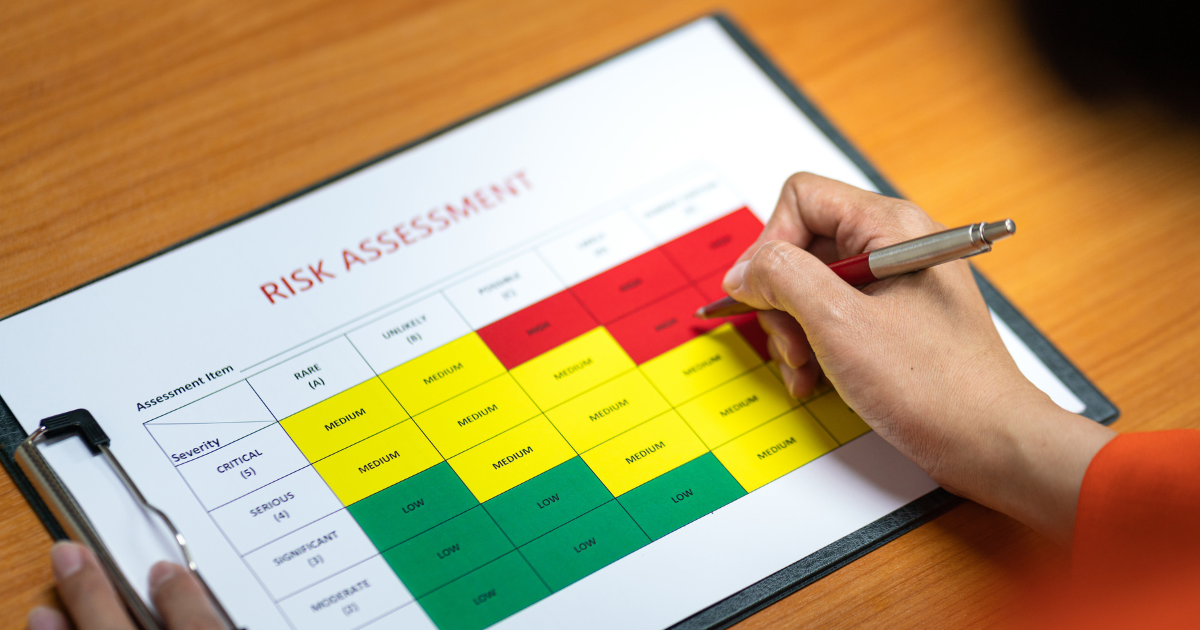Fire risk assessment for businesses: What to include in your plan

Fire safety is a critical aspect of business operations worldwide. A thorough fire risk assessment not only ensures compliance with local legal requirements but also keeps people safe by identifying and mitigating fire hazards. Here, we break down the essential elements of creating an effective fire risk assessment and maintaining fire safety standards in your workplace. For specialised fire-resistant fabrics that enhance safety in public and commercial spaces, visit our catalogue.
Understanding fire risk assessments
Why fire risk assessments are crucial for businesses
A fire risk assessment is a systematic evaluation of fire hazards, fire safety measures, and escape routes in a building. It helps businesses minimise fire risks and protect both employees and customers. Legal compliance with fire safety legislation is mandatory, but the real value lies in ensuring the safety and well-being of everyone on the premises.
Fire hazards can arise from multiple sources, including electrical equipment, flammable materials, and human error. An effective fire risk assessment identifies these risks and provides strategies to mitigate them, ensuring that workplaces are better prepared to handle potential emergencies.
Key elements of a fire risk assessment
- Identifying fire hazards: Sources of ignition, flammable materials, and potential risks.
- Determining who might be at risk: Employees, visitors, and vulnerable individuals.
- Evaluating existing fire safety measures: Fire extinguishers, alarm systems, and emergency lighting.
- Recording findings and actions: Creating a fire assessment report for documentation.
- Reviewing and updating regularly: Ensuring ongoing compliance and safety.
Effective communication of fire safety measures is also crucial. Businesses must ensure that all employees are aware of fire hazards and the necessary steps to take in case of an emergency. Training sessions and drills can significantly enhance preparedness.
5 steps to ensure compliance with fire safety regulations
Compliance with fire safety legislation involves a structured approach:
- Identify hazards: Look for heat sources, fuel, and oxygen that could cause a fire.
- Assess risks: Evaluate the likelihood and potential impact of a fire.
- Implement safety measures: Install fire extinguishers, improve escape routes, and train staff.
- Document findings: Maintain a detailed report outlining risks and preventive actions.
- Regular reviews: Update the assessment to reflect changes in the workplace.

What is the regulatory reform (fire safety) order?
The Regulatory Reform (Fire Safety) Order 2005 consolidates fire safety laws in England and Wales. It places responsibility on the responsible person, typically the employer, owner, or manager, to ensure a fire risk assessment is completed, and necessary precautions are in place.
This legal framework is mirrored in various forms worldwide, requiring businesses to identify fire hazards and implement measures to minimise risks. Understanding the local regulations is vital for global businesses operating in multiple jurisdictions.
Understanding your legal obligations under UK law
Businesses must:
- Conduct and regularly review fire risk assessments.
- Provide appropriate fire and safety measures, including extinguishers and signage.
- Maintain clear escape routes.
- Train employees in fire safety procedures.
How to keep your fire risk assessment updated
- Schedule annual reviews.
- Update assessments after significant changes, such as renovations or staff increases.
- Document all updates in your fire assessment report.
Creating a comprehensive fire safety plan
Essential fire and safety measures
A robust fire safety plan should include:
- Adequate fire detection and alarm systems.
- Regular maintenance of fire extinguishers.
- Clearly marked and unobstructed escape routes.
- Emergency lighting for safe evacuation.
- Staff training on fire prevention and evacuation protocols.
Benefits of a well-defined fire safety plan
- Reduces the likelihood of fires.
- Ensures swift evacuation, minimising harm.
- Protects assets and reduces financial losses.
- Enhances employee confidence and peace of mind.
Fire safety plans also play a crucial role in ensuring that businesses can resume operations quickly after a fire incident. The inclusion of contingency plans can mitigate downtime and associated costs.
Expert tips for reducing fire risks in businesses
- Conduct regular risk assessments to identify vulnerabilities.
- Ensure all electrical equipment is PAT tested.
- Store flammable materials securely and away from ignition sources.
- Maintain clear signage and keep escaping routes unobstructed.
- Invest in high-quality fire alarms and sprinklers.
By understanding what is a fire risk assessment and implementing these strategies, businesses can significantly enhance their fire safety standards. Remember, a proactive approach not only complies with legal requirements but also ensures a safer environment for everyone.
Stay informed, stay prepared, and keep your workplace safe from fire hazards.
Subscribe to our newsletter
Receive all communications in your email to stay up to date with our news, as well as news and advice about the sector.
Latest published articles
Do you need advice?
We collaborate with you to develop custom designs tailored to the needs of each project, creating the fabric according to aesthetic, quality, or usage requirements.
Get in touch with us, and we will advise you on our products, or request a free sample.




